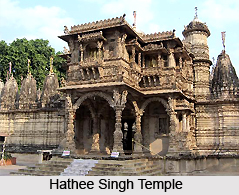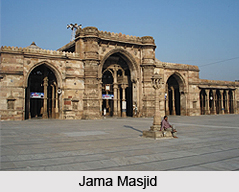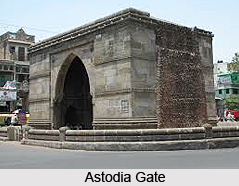 Pilgrimage Tourism in Ahmedabad covers with the blend of religious diversity. Ahmedabad is a prosperous city where one can find an exceptional blend of the history, art and culture, rich architecture and imposing monuments.
Pilgrimage Tourism in Ahmedabad covers with the blend of religious diversity. Ahmedabad is a prosperous city where one can find an exceptional blend of the history, art and culture, rich architecture and imposing monuments.
Ahmedabad has a large number of religious places that belong to different religious communities. With a series of Hindu shrines and with a number of Muslim shrines Ahmedabad stands as the logo of religious integration in India.
Hindu Temples of Ahmedabad
Swami Narayan Mandir built in the year 1850. It is the oldest temple of the Swami Narayan sect in Ahmedabad. It is an exquisite example of Maratha and Jain temple amalgamated architecture and has rich and elaborate carving on the interior facade of the entryway archway. It is best to visit the temple before the rush hour for the morning aarti (8 A.M.).
Doshiwada ni Pol
The walk`s high spot is the 90-year-old Doshiwada ni Pol, in reality a haveli with a windowless street facade. The 40-room haveli has engraved cherubs, sharp gabled roofs, tall gothic windows and meandering wooden stairs - all looking across a fundamental courtyard- the lonesome source of ventilation. It is essential to see the havelis` bridge-corridors from here.
Hathee Singh Temple
Just next to the Delhi Gate is the Hathee Singh Temple, constructed in 1848 by Sheth Hatheesingh Kesrisingh, a high-flying Ahmedabad merchandiser. The temple was seemingly funded with the wealth he compiled from opium trade with China. Gujarati merchants, supplying opium from Malwa, played a significant part in the economy of the British Empire. The temple has 52 shrines, each with a gold-studded marble image of the Tirthankaras. It has intricate carvings on its roof. In the basement, there is a colonial era fire-resistant iron safe with an emblem of Queen Victoria donning Gujarati jewellery.

Muslim Temples of Ahmedabad
Some of the muslim temples of Ahmedabad are:
Manek Chowk
A truly Ahmedabadi feel can be experienced by commencing at sunset from Manek Chowk (near the Ellis Bridge, one of the five over the Sabarmati) and walking up to the Teen Darwaza and the Bhadra. Manek morphs each day. Cows can be seen feeding here in the wee hours of the morning. It becomes a car park after 9 am. Late in the evening, it`s an open-air plaza, admired for its remarkable assortment of street food.
Off Manek Chowk are the Badshah no Hajira and Rani no Hajira tombs. The Rani no Hajira was erected in the 15th century, dedicated to the queens of Ahmed Shah. It is built on a raised platform, encircled by colonnades and perforated stone screens. The Hajira is normally locked, but the guard can be requested to open it. Inside the enclosure, there is a serene open courtyard, with astonishingly chiselled marble cenotaphs. Crossways the road is the Badshah no Hajira, the resplendently domed 15th century tomb complex, bearing the venerable graves of Ahmed Shah I and his successors.
Jama Masjid
To the east is the Jama Masjid, built by Ahmed Shah II in 1424. It has an indisputable feeling of both space and quietude. It is conceived that the mosque had grandiloquent minarets that were ruined during an earthquake in 1819 A.D. The central tank, covered by a ceiling defended by chiselled wooden pillars, is nippy even on the hottest summer day.
Azam Khan`s Palace
The tall and daunting entryway to Azam Khan`s Palace is almost readily accessible. Azam Khan, the 23rd Mughal governor of Gujarat, was popular as the `white ant` or `udhai` for his inclination to build whichever place he visited. The gateway is now untidy with roadside typists and stenographers.
 Mosques of Old Ahmedabad
Mosques of Old Ahmedabad
Apart from the majestic Jama Masjid, Old Ahmedabad has over 50 smaller mosques dating back to the 15th and early 16th centuries. The most stylish is Rani Sipri`s Mosque, near Astodia Gate. Also known as Masjid-e-Nagina (jewel among mosques), the shrine has complicated sandstone carvings with Hindu and Muslim motifs. The elaborated jharokhas on the south walls and the slim sky-bound minarets are astounding. Possibly the finest example of Gujarat Sultanate architecture, it is also, to quote Fergusson, "...the most perfectly Hindu of the buildings of the city."
Sidi Saiyyad Mosque
The other must-visit mosque is the Sidi Saiyyad Mosque near the Khanpur Gate. It is legendary for the exceptionally chiseled stone tracery on its 10 semi-circular windows.



















